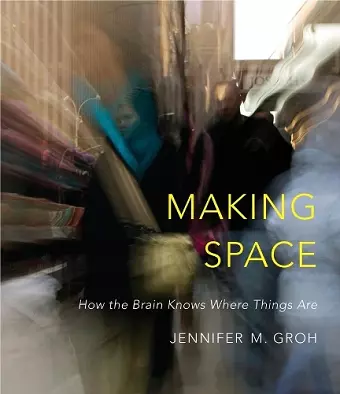Making Space
How the Brain Knows Where Things Are
Format:Hardback
Publisher:Harvard University Press
Published:5th Nov '14
Currently unavailable, and unfortunately no date known when it will be back

Knowing where things are seems effortless. Yet our brains devote tremendous computational power to figuring out the simplest details about spatial relationships. Going to the grocery store or finding our cell phone requires sleuthing and coordination across different sensory and motor domains. Making Space traces this mental detective work to explain how the brain creates our sense of location. But it goes further, to make the case that spatial processing permeates all our cognitive abilities, and that the brain’s systems for thinking about space may be the systems of thought itself.
Our senses measure energy in the form of light, sound, and pressure on the skin, and our brains evaluate these measurements to make inferences about objects and boundaries. Jennifer Groh describes how eyes detect electromagnetic radiation, how the brain can locate sounds by measuring differences of less than one one-thousandth of a second in how long they take to reach each ear, and how the ear’s balance organs help us monitor body posture and movement. The brain synthesizes all this neural information so that we can navigate three-dimensional space.
But the brain’s work doesn’t end there. Spatial representations do double duty in aiding memory and reasoning. This is why it is harder to remember how to get somewhere if someone else is driving, and why, if we set out to do something and forget what it was, returning to the place we started can jog our memory. In making space the brain uses powers we did not know we have.
Groh deftly elucidates the mental computations that allow understanding of location and boundaries, interweaving well-judged snippets of history. The mechanisms, such as the brain’s updates on eye movements, are fascinating—as is Groh’s revelation that neurons can ‘do double duty’ in tasks such as spatial navigation and memory. -- Barbara Kiser * Nature *
Jennifer Groh’s wonderful book offers a much broader insight into how the senses we think of as separate gather information on our environment, and how nerves and the brain process the information to map our bodies and the world… It’s a fascinating subject that Groh describes well… It’s also an important one. -- Jeff Hecht * New Scientist *
Groh’s book describes the general process by which the brain conceives of space in a highly unconventional and entertaining stream of Jennifer Groh’s consciousness… It lays out a fascinating field of inquiry (which is really multiple fields interwoven convincingly, filtered by Groh’s own thought processes) in a way that shows how a proper scientist thinks. -- Stephen L. Macnik * Scientific American *
[A] wealth of beautifully intertwined information and knowledge about how sensation and perception work in the brain… There is much to praise here… It is exhilarating to feel [Groh’s] energy and cautious optimism about our capacity to understand how we perceive, and how that could lead to an explanation of how we go around and about in the world. -- Tristan Bekinschtein * Times Higher Education *
In Making Space, Jennifer Groh has provided an engaging introduction to neuroscientific perspectives on the spatial senses, while also illustrating the contrast with psychological approaches to the functioning of sensory systems. -- Gary Hatfield * Times Literary Supplement *
A terrific book; very imaginative, yet based on solid science. -- Michael Gazzaniga, author of Who’s in Charge?
Making Space is written with a light touch, but with impeccable scholarship. It is extremely readable. -- Randy Gallistel, Rutgers University
- Commended for PROSE Awards 2015
ISBN: 9780674863217
Dimensions: 203mm x 178mm x 22mm
Weight: 522g
256 pages